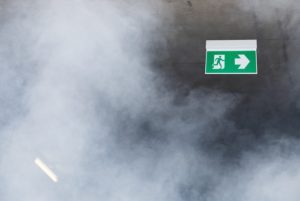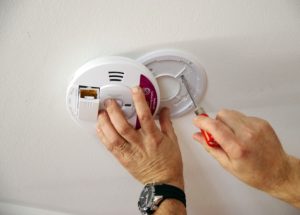When you’re setting up the safety features in a building, there’s a lot to keep in mind. Every facet of the building needs to be taken into consideration, from large machinery and walkway railings to smaller tripping hazards and fire extinguishers. You’ll need to consider each aspect of workplace safety and decide on the best products and the best means of implementing them. The installation of gas leak detection monitors is essential in this regard. But where are the best places to install these detectors in a given building?

Identifying Potential Hazards
Before you install any fixed gas detection systems, you need to figure out where they’ll do the most good. Examine the equipment in your plants or office to figure out where a gas leak would be most likely to come from. In industrial situations, you’ll usually be looking for weak points along joints or valves, or in specific areas of a manufacturing facility. You should seek the advice of experts to find out what’s most at risk in your company. Often, when you’re buying a gas leakage detection system, the sellers will offer an installation service that can help you with the evaluation process. They can also help you figure out where sampling points would be the most beneficial. That could include places with a lot of workers, rooms where gases are stored, places where flammable gases might be expelled, or a variety of other unsafe situations. These are the areas that will need the most attention going forward.
Gas Weight
Gas leak detection equipment is very sensitive, which is usually a good thing. Unfortunately, that also means that it can be thrown off by different variables. For instance, certain natural gases like methane and hydrogen rise because they’re not as dense as the air, so you should put your alarms above doors and windows to catch the gas as it’s going up. If you have heavier gases, such as hydrogen sulfide, the gases won’t rise in the same way, so you should just put your detectors above whatever is most likely to leak. If your gas is about the same weight as air, you should put your monitor two to eight feet above the ground.
Air Flow

Wherever you place your gas detection monitors, you don’t want them to get too close to anything that might force air away from the sampling point. While the gas detection system will use a pump to draw in a sample, if air is flowing around the collection point it may provide inaccurate readings. However, placing sampling points inside of air ducts will provide detection in vented rooms. While the room may be safe due to the ventilation, the leak will continue. Adding detection points in ducts can allow you to correct any faulty cylinders or incorrect storage methods. Figure out how the air generally flows through your facility and position your monitors accordingly. Otherwise, the direction or velocity of that airflow can mess with your device.
You need to make sure that it’s flowing from the potential leak sources to your detector, and that, in the event of a leak, enough of the gas would get to the sensor to trigger it.
If you want to learn more about how you can keep your employees safe from dangerous gases, contact DOD Technologies, Inc. today.






